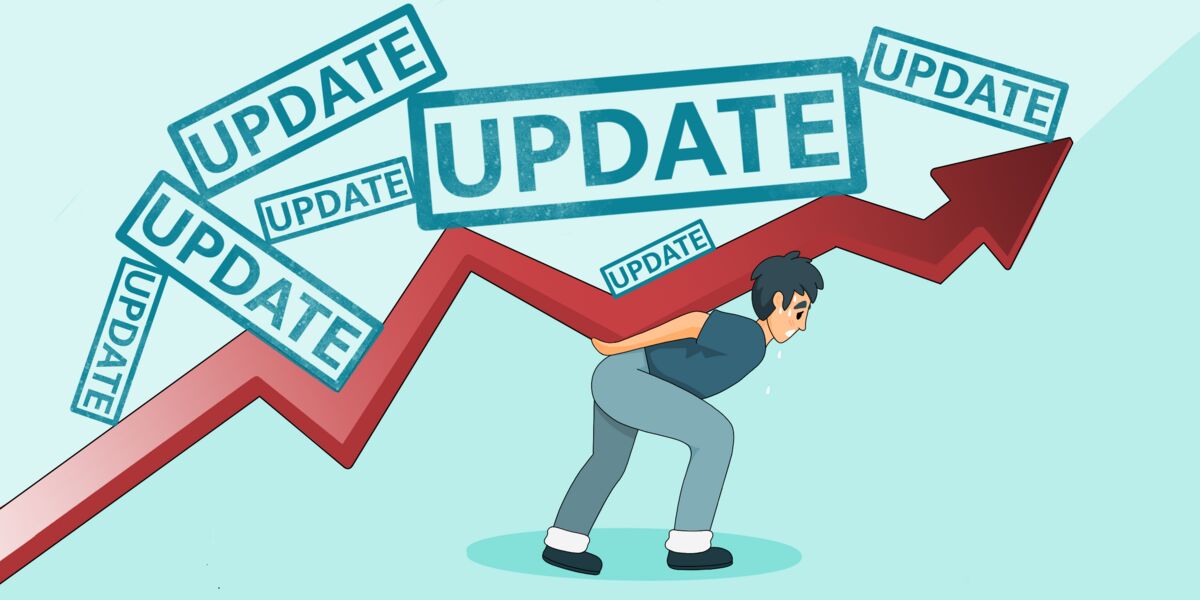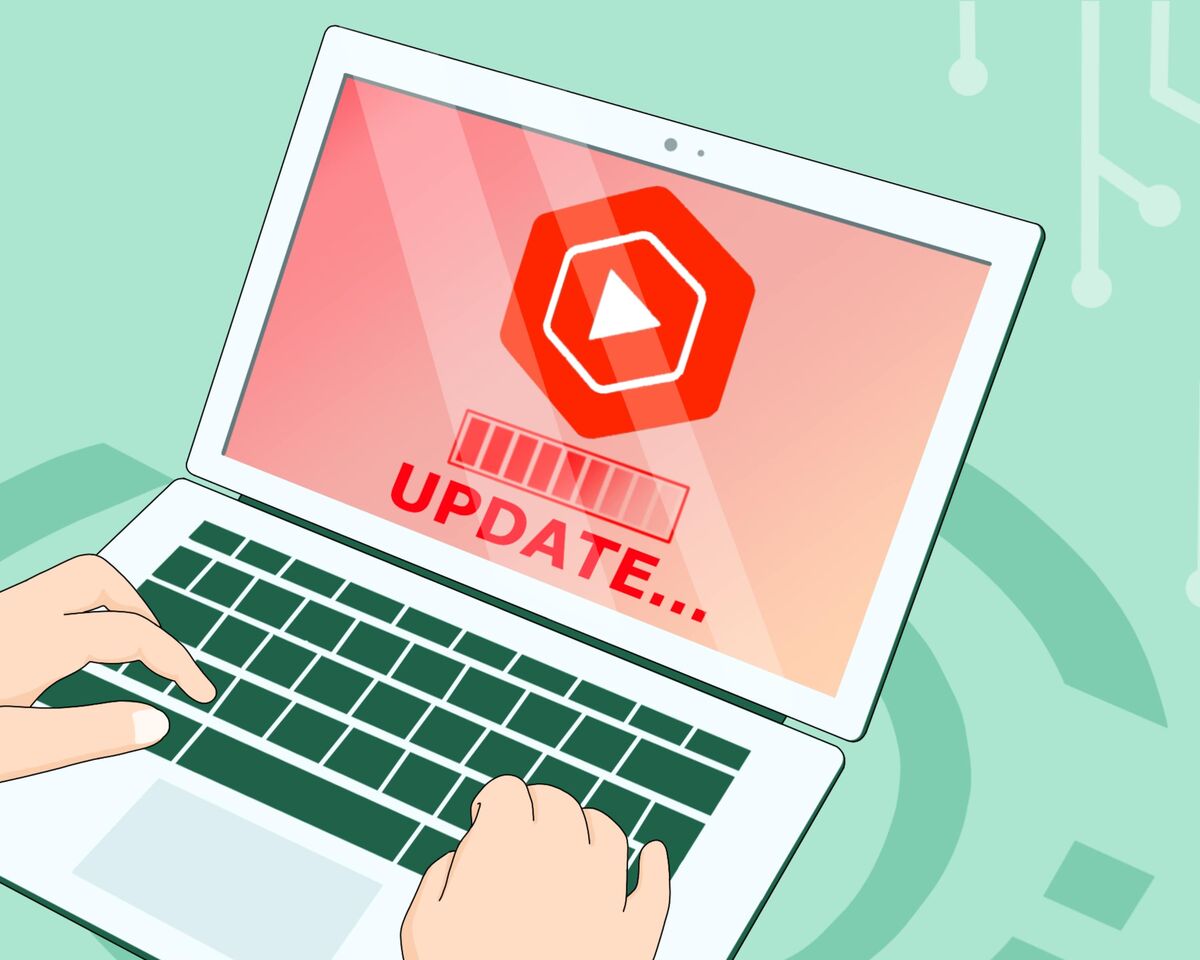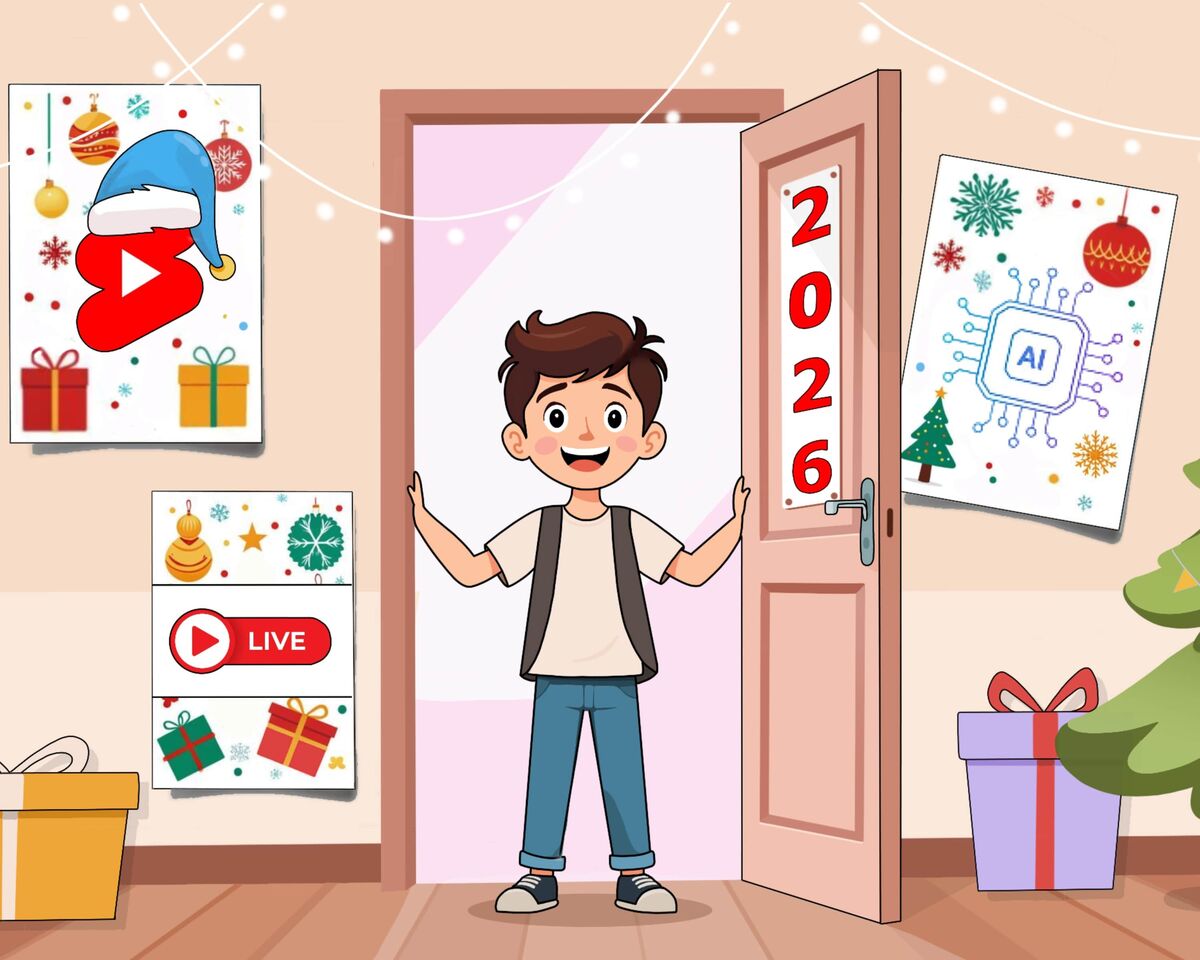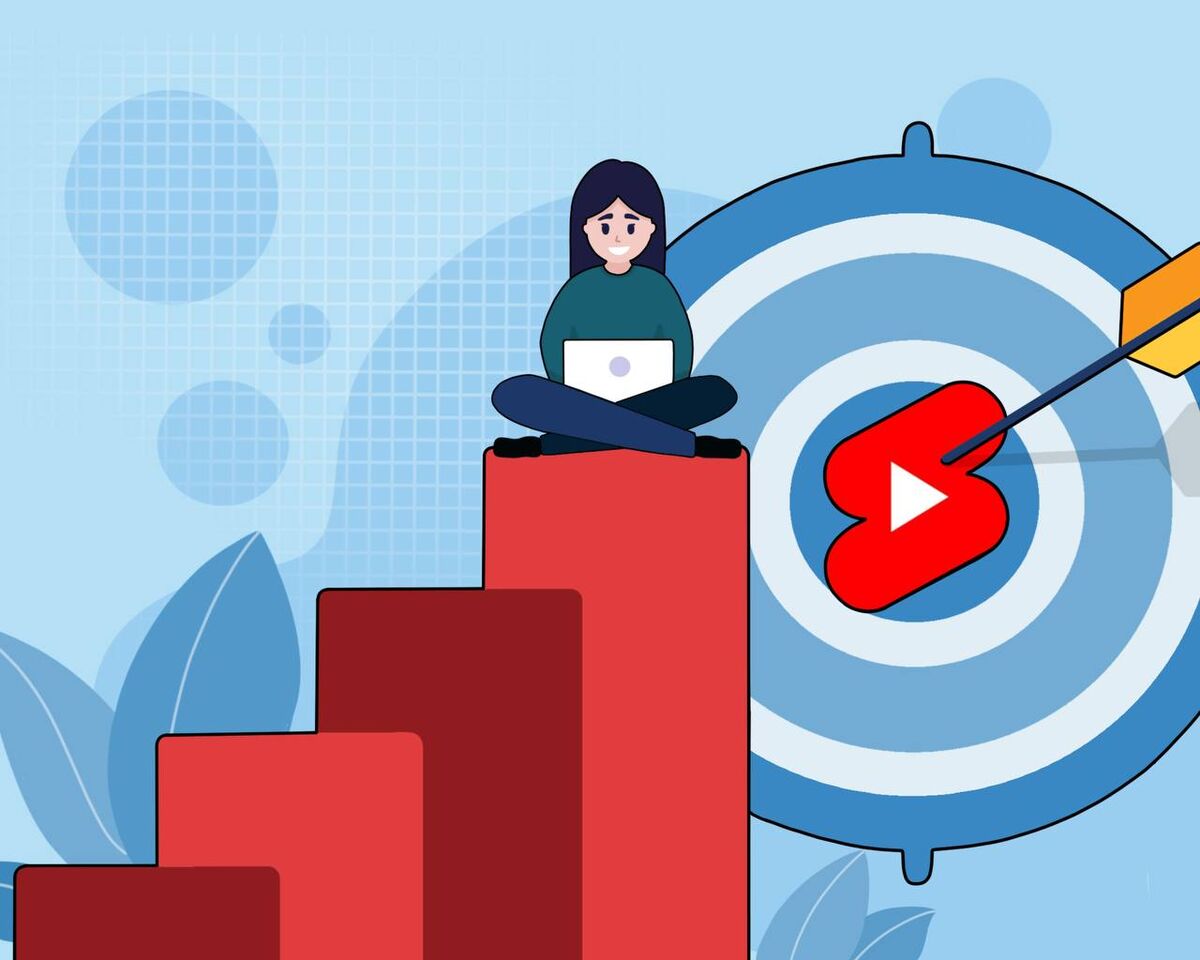5 YouTube Updates That are Harmful to Creators

We're bombarded with so many messages about how much YouTube cares for creators and viewers. You’re told that new features will enhance content, allow for creative expression, and even help you make money.
But with each passing year, you probably become more skeptical about some of YouTube's updates. It seems like the platform's primary goal isn't just to make money, but also some kind of obsessive desire to eliminate any competition.
Let's take a look at the updates YouTube introduced this year, specifically focusing on those that could reduce the number of creators on the platform.
The first topic we’ll discuss is Shorts.
Since the introduction of this format on the platform, the audience has split into two camps: those who exclusively watch short videos and those who prefer longer ones. Of course, there is a middle ground and some who switch between the two, but for now, let's focus on this division.
As you might imagine, these viewers have different goals.
Those who watch long videos tend to do so more deliberately. They might tune in to their favorite creator during a lunch break, play videos in the background while cleaning or working, or watch them in the evening with family, and so on.
Short videos, on the other hand, serve a different purpose — providing a quick serotonin boost and a bit of energy. That's why people watch Shorts during short commutes, in between work tasks, or when they just want to mindlessly scroll, lift our spirits, or alleviate boredom.
So, if someone is lying on the couch, scrolling through Shorts for a laugh, the chances of them switching to watch long-form videos are almost nil.
When creators decide to start making Shorts to quickly gain an audience and rack up views, they often don't realize that these viewers will only consume their Shorts. As a result, their long-form videos, despite the numerous views on their Shorts, might not perform well at all.
So, what's the issue that creators are facing this year?
URLs missing in Shorts
To understand why these changes are disheartening, we need to take a brief look back at the past.
In 2022, the short video format seemed to reach the peak of its popularity. Today, Shorts and TikToks are familiar and taken for granted, but back then, the wave of interest in this format was incredible.
It was at that moment that SMM specialists, marketers, and creators began developing new strategies for promoting personal accounts and brand pages on social media. However, there was still a lot of uncertainty about how to engage with audiences on platforms like TikTok and Instagram.
Shorts, at the time, were also somewhat of a mystery. However, being a project from the largest platform, YouTube, backed by a powerful PR campaign, it was bound to take off sooner or later.
Once the platform’s algorithms began to stabilize and users started receiving more relevant content tailored to their interests, creators began to see some advantages in this format.
For instance, creating a channel exclusively for Shorts could prevent the decline of views on long videos since there would be no long videos on that channel. YouTube creators could grow their audience, evolve similarly to TikTok creators, and everything would be fine.
Another feature that could benefit creators, particularly those who already have long-form videos on their channel, is the addition of clickable links in Shorts.
For example, let's say you record a short video where you share five tips on how to gain subscribers on YouTube. We've already discussed that a specific category of viewers watches Shorts; they come specifically for short videos. However, if you leave a link to the full length video with a message like, "I've shared five tips with you, but the most secret and powerful ones are in this video. Just tap to learn more," that's a different story.
Of course, not all viewers will be drawn in by this, but many might find this approach interesting, and you'll be engaging viewers with both formats: Shorts and long videos. This increases conversion rates and boosts the watch time from a single viewer. Some might even subscribe to watch longer videos.
But if you decide to go this route, use this strategy carefully, as mixing short and long-form videos can be risky.
However, despite the aforementioned developments, on August 31, 2023, YouTube's rules regarding Shorts changed. They decided to remove clickable links from the video description. This specifically affected Shorts.
So, this feature was quite useful for those who integrated advertising collaborations into the short format and left helpful links to products and services in the description. Now, that’s simply impossible.
Why was this change made?
In 2023, The Verge shed light on some of the reasons behind this change.
YouTube closely studied the experiences of its industry peers and decided it couldn’t allow what was happening on platforms like TikTok. For example, TikTok also had a clickable links feature, but scammers and spammers exploited this to run various schemes. One user even reported losing $24,000 in just two hours after falling for a scam on TikTok.
Given this perspective, it's commendable that YouTube took these situations seriously and chose to address the issue proactively before any scandals erupted on its platform. However, this raises an important question: if YouTube is removing clickable links in Shorts to prevent scams, why is it introducing the ability to add the same clickable links to advertised products in regular videos?
What can we conclude from this? Not only is the Shorts format itself questionable—as discussed earlier, short videos can negatively impact the retention of longer content since viewers rarely transition from the Shorts feed to longer videos—but now, the format also becomes nearly useless for affiliate marketing. There’s no place to insert referral links or add links to advertised products or services. While this may result in a loss of revenue, at least we’re all safer.
Youtube’s new design
In April of this year, many users started noticing YouTube's updated design.
YouTube decided to move the description block to where the recommended videos used to be, while pushing the recommended videos lower and making that feed infinite. At first glance, this update might seem a bit inconvenient but generally logical.
Now, viewers no longer need to divert their attention from the video to read the description, leave a comment, or quickly find the link mentioned by the video’s creator. The video remains in front of them, their focus stays intact, and everyone’s happy—or so it would seem in an ideal world.
However, comments, which users love to read, have been displaced. Viewers note that it’s now inconvenient to interact with comments, regardless of the device they’re using.
On top of that, it’s easy to miss when tapping different buttons, from "like" to "share" or "download." Switching to fullscreen mode doesn’t help much—it moves the description slightly lower, but the panel remains just as small.
If you haven’t encountered this update yet, or if it appeared and then disappeared, don’t worry. YouTube eventually informed users that the updated design is currently being tested only with premium subscribers.
In a recent video, one of YouTube's experts, Nick Nimmin, demonstrated just how complicated the new layout can be. He joined a live stream from one of the creators and encountered the following issue.
As usual, the chat appeared in the sidebar. But where was the promised description that we saw in the examples above? There were recommendations below, sure, but the video description and the helpful links were nowhere to be found.
But not so fast. It turns out that the user needs to click the "X" to close the chat in order to see the description. Of course, you're supposed to figure this out on your own.
But there's a catch here too. The description does appear, but not in full. Only the video title and a single line are displayed. The user then has to click "Show More" to see the rest.
Think that's it? Nope, more problems keep unfolding.
When you expand the description, it still doesn’t fully open. Some of the information that the creator meticulously compiled and wrote seems to vanish into thin air.
So, you'll see the video description, but to access useful links or timestamps, you'll need to click "See more" again. Only after numerous clicks will you finally get what you want.
Reddit users are actively criticizing the update, calling the design changes "terrible," and arguing that these changes were unnecessary and that design was definitely not the urgent problem that needed fixing.
So, with the videos on the topic pushed down, it's unclear how the recommendation systems will work. Essentially, viewers might not even see them. They’ll only have a column with an incomplete channel description.
Since opening the description has become more complicated, it may lead to viewers not reaching the links. This means goodbye to donations, referral links, and other tools that generate income for creators.
Another important detail is that comments are now unavoidable. Not everyone wants to see spoilers. Additionally, viewers might find answers to their questions in the comments and thus might not feel the need to watch the video.
Changes in Links
We won't have to stray too far from this topic. Recently, the redesign of the channel's main page has caused numerous problems. Let's start with the first and most obvious one.
As we know, and are almost accustomed to, all links to social media and websites are now placed in the channel description, with the first link visible on the main page above the subscribe button.
In our opinion this update lacks utility.
First, it looks as though the developers forgot to finish this section. It appears very crude. In the past, channel headers used to have neat, clickable icons for social media or websites.
Minimalist, unobtrusive, and, most importantly, noticeable.
Second, you now only have the option to offer viewers just one link. Don’t expect more than that.
Of course, this capability hasn’t been entirely removed, but viewers still have to make some extra effort to discover if you have additional links. And as we know, viewers don't like to take unnecessary actions.
Why YouTube has done this remains an unanswered question. However, one might speculate that YouTube no longer wants to share attention with other sites, making it more difficult for users to find external links, ensuring only the most persistent can access them.
Now, let's return to their redesign. How are things with the links there? Just as bad.
After the channel name block, we'll see icons for "All Videos," "About," and then come the useful links that the creator wanted to present.
The catch is that YouTube didn't bother to showcase that there is a scrollable section where the links are placed. Currently, this issue is visible only on the PC version. What it will look like on mobile devices is unclear.
Typically, on websites and social networks, we see various arrows that indicate more buttons, links, and other options will appear when clicked.
Here's a simple example: you visit an audiobook website to check its functionality, and you immediately see a simple, yet noticeable and clear navigation.
In contrast, YouTube's design is completely underdeveloped in this regard, which means users will have to figure it out and guess on their own.
So, you need to be cautious in the future when placing your primary link. It’s likely that only this link will be visible to viewers until they figure out how everything works—or until YouTube decides to refine its updates.
Therefore, you should choose carefully what specific link you want to recommend to your viewers. Which website or social network will you highlight?
Moving on to next episodes
One of the most nightmarish yet fascinating updates is the double-tap feature to skip to the next episode.
First, let’s look at the pros:
Now, when you double-tap to skip ahead, you'll see a ‘jump ahead’ button that'll take you right where you want to go.
If you're a viewer, this makes watching content incredibly simple. You won’t have to tap the screen repeatedly to skip ads or a confusing episode. No need to dig through the timeline—just two taps, and you get a "Skip" button to move on to the next episode. It’s a dream come true!
But what about the creators?
Double tap is a watch time killer.
What YouTube is doing seems extremely inadequate, as retention is one of the most crucial analytics metrics that determines how interesting you are to viewers and whether the algorithms will recommend you.
YouTube's claim to care about both creators and viewers seems hypocritical. The double-tap fast-forward feature may benefit viewers, but for creators, it's a disaster.
If the audience starts skipping ads that appear as separate time codes, it will significantly cut into the earnings of creators. Very few people bother to watch an entire video.
So the question is: YouTube praises affiliate marketing and sponsorship on the platform, encouraging content monetization and promising support. But doesn’t it seem like they’re acting in the same way as ad blockers, which they vigorously combat?
If your video is essentially an advertisement for a product, like gadget reviews, that's fine. But if you have a separate ad integration in your video—whether with or without introductions—it could create a serious problem.
YouTubers already have to survive in a tough and highly competitive environment. They need to create high-quality, almost cinematic content quickly and creatively. And what do they get in return?
It will be interesting to see YouTube's reaction when creators start leaving in droves and finding more supportive platforms. Because YouTube is practically doing everything possible to drive them away.
AI Search from Google
Not long ago, Google, the current parent of YouTube, introduced an update to its app and search page called "Search Lab."
It’s important to note that this is just an experiment, but as we know, Google isn’t afraid to implement even seemingly doomed features. For instance, back in December 2022, Google introduced YouTube Stories.
However, the feature didn’t resonate with users because people come to YouTube for entirely different content. By June 2023, just six months later, the Help Center announced that YouTube Stories was discontinued, marking the end of this short-lived and unsuccessful feature.
But let’s shift our focus back to AI Search. The "Search Lab" that Google is rolling out is actually quite intriguing. Essentially, it’s a search function powered by generative artificial intelligence. For example, if you search for a question like "Why are bees so important?" The neural network will provide a response in just a few seconds, using simple and understandable language.
This significantly reduces the amount of time spent online searching for specific information. As we've seen recently, tools like ChatGPT are now helping students write papers, solve homework in a few clicks, and even write books.
On the surface, this sounds great for saving time. But if this point were truly perfect, it wouldn’t be discussed in this article, right?
Let's consider how we typically solve practical problems. Most of you would probably say that you go to YouTube to watch a video. This has become our norm. The quicker and more effectively we can get an answer to our issue, the better.
Google has also come up with a great feature where it immediately offers videos on the topic when you enter a query into the search bar.
And now let's think about what will happen next with the suggested videos.
Artificial intelligence will be tasked with compiling the most important details to answer a person's question. As you may understand, the quicker and simpler, the better. No need for extra clicks, no need to skip through a video if there's a lengthy introduction.
In essence, useful videos might lose their significance. Why should a user watch an entire video when there's a concise summary available? This presents an interesting challenge to consider.
How should we deal with these frustrating developments?
All these situations seem very challenging. YouTube is increasing the pressure on creators. We are heading towards a future where content owners will need to completely switch strategies to gain any views. As mentioned earlier, this could potentially destroy many YouTube channels where creators are truly passionate about their work.
What’s most frustrating is that YouTube introduces convenient features for viewers but offers nothing in return for creators. It only adds stress, anxiety, and problems. Doesn’t this contradict the platform’s claim of “caring about the comfort of our creators and providing them with ample space for creativity”?
So, what can be done? Let’s address the issue of double tapping, as it poses a real threat to creators' retention metrics. This problem can be tackled creatively. If you are doing a promotional integration, make it native.
You integrate the advertisement into the narrative in a way that doesn’t annoy the viewer and blurs the boundaries of promotional integration. It becomes impossible to skip because it’s part of the video.
Now, let’s discuss the second issue that concerns us: links.
While you can’t influence the relocation of the description in the design, handling links is quite manageable.
Here is a useful tool, Taplink.
Creating a Taplink is very straightforward; there are plenty of templates and, importantly, a free version that offers a lot of features.
Of course, issues might arise over time. For instance, if you use it to store links for all your integrations, useful products, and articles, you might end up with a lengthy list of endless links. This can become quite cumbersome.
But let's address problems as they arise. If YouTube ever decides to remove links from the descriptions of long-form videos, you'll still have this archive of useful links.
In any case, YouTube won’t be able to completely eliminate all your options. Viewers will still be able to find a link on your main page and access all the important links.
Lastly, a word of caution: Yes, YouTube will continue to evolve, often prioritizing commercial interests over genuine creativity. So, buckle up and hold on tight.
It’s important to remember that your role as a creative, producing unique content, is crucial and should be your main motivation. Otherwise, it’s easy to lose your way on your YouTube journey.
Stay true to your passion, adapt to the changes, and remember that your creativity is what truly sets you apart. No matter what challenges arise, continue to focus on creating content that resonates with you and your audience. After all, your unique voice is what makes your channel special. Keep pushing forward—your dedication will always find a way to shine.




